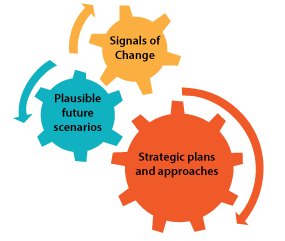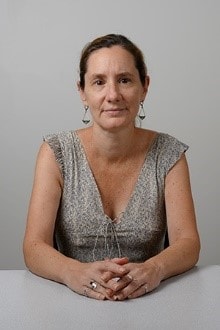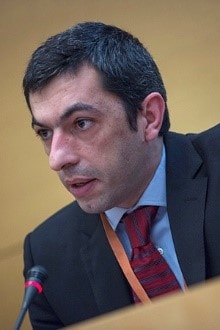Strategic Foresight at NIOSH
Strategic foresight is an action-oriented discipline. It evolved from futures studies, a field that systematically explores multiple possible, probable, and preferable futures. Strategic foresight is not a practice that tries to accurately predict the future. It is also not intended to be a replacement for traditional strategic planning. Instead, strategic foresight is a practice that looks ahead and asks what may be coming, how it might affect us, and what we can do today to start moving toward a preferred future outcome. This forward-facing perspective can be a particularly useful element of strategic planning efforts during periods of complex instability or uncertainty, reducing the likelihood of being unprepared for or surprised by the future when it arrives as part of the mainstream.

The term “foresight professional” or “futurist” refers to anyone who systematically thinks about and analyzes the future. Foresight professionals (futurists) work across a variety of industries and use a number of different tools to look for signals of change, identify primary drivers of the future, and craft a set of plausible future scenarios. These foresight outputs can then serve as valuable inputs to the development of strategic approaches and the proactive preparation for an uncertain future.
In January 2021, the NIOSH Office of Research Integration established the NIOSH Strategic Foresight Initiative (SFI) to lead strategic foresight activities and build foresight awareness and capacity at NIOSH and throughout the occupational safety and health (OSH) community.
As one of its first tasks, the SFI developed the NIOSH Foresight Framework for OSH shown in Figure 1. The framework is an adaptation of the Framework Foresight method developed by the University of Houston, an internationally renowned approach that is versatile an flexible enough to accommodate a variety of project topics and aims while also providing a clear roadmap through the foresight process.

Figure 1. NIOSH Foresight Framework for OSH.
Like the University of Houston Framework Foresight, the NIOSH Foresight Framework for OSH has six discrete stages that are interrelated and interdependent:
- Framing: identifying and describing the OSH domain or topic of interest and other project parameters.
- Scanning: searching for information about how things might be different in the future for the domain of interest. A variety of information sources should be reviewed during the scan.
- Futuring: developing alternative future scenarios (i.e., stories) for the domain.
- Visioning: considering the implications of the different scenarios to uncover potential risks, challenges, and opportunities and assess future preparedness.
- Designing: planning and constructing strategic approaches in support of a desired future.
- Monitoring: continuing to scan for new signals of change and updating the domain topic as needed to further refine future foresight efforts.
Partners, including representatives from government, industry, labor, and OSH research and practice, should be engaged throughout the strategic foresight process. Their involvement at each stage in the framework should be tailored to effectively support the project purpose. Additionally, though the framework is visually represented by a sequential model, the strategic foresight process is not entirely linear. Both during and at the end of each stage, the activities and outputs of all previous stages should be carefully considered to determine if any additional work is needed before proceeding through the remaining framework stages.
Throughout the year, the SFI provides opportunities to learn about foresight principles and their application to OSH. Additional information is provided below for Foresight Friday @ NIOSH, the SFI flagship effort to bring foresight to OSH.
The purpose of the Foresight Friday @ NIOSH webinar series is to expand strategic foresight capacity in OSH and advance the role of foresight in OSH research, service, and practice. The series engages an interdisciplinary audience of researchers, practitioners, and other subject matter experts to share resources, support, and best practices for the application of foresight to OSH. It also provides a place where members of a growing OSH community of interest can regularly come together to strengthen their connections to foresight experts and one another.
Foresight Friday @ NIOSH is free and open to the public. Events are virtual and occur quarterly, typically on a Friday from 11:00 am – 12:00 pm ET.
Please direct any questions about Foresight Friday @ NIOSH to the NIOSH Office of Research Integration (ORI@cdc.gov).
May 17, 2024 11 AM ET
Managing work activities on the 2040 horizon: Challenges for OSH
Where, when, why, and how we work is currently influenced by many trends, including technological innovations, market instabilities, organizational agilities, fragmented careers, climate change, rapid transformations of production systems, the desire for work-life balance, and the pursuit of meaningful work. Such changes require new ways of managing work, which can bring new impacts to occupational safety and health. Please join us to hear how a multidisciplinary team of colleagues from the French National Research and Safety Institute for the Prevention of Occupational Accidents and Diseases (INRS) recently used methods such as design fiction and in-depth expert analysis to explore how different work management approaches might unfold over time and bring new challenges and opportunities to the future of occupational risk prevention.
Featured Speakers:

Jennifer Clerté is Project Manager at the Watch and Foresight mission of the French National Research and Safety Institute for the Prevention of Occupational Accidents and Diseases (INRS). She joined INRS in 2017, as Manager for the Information and Technical Library Service. She has a dual background in history and geopolitics.

Marc Malenfer leads the Watch and Foresight Unit of INRS. He joined INRS in 2005, first working in communication and occupational risk prevention for small and medium-sized enterprises. He then transitioned to the Watch and Foresight Unit in 2017. His work now focuses on topics such as uberization, the circular economy, and artificial intelligence. Marc has a dual background in history and risk management.
Past Foresight Friday @ NIOSH
This webinar engaged a panel of experts to provide insights on the application of strategic foresight across various settings, including government, industry, and academia. Panelists were: Sharaelle Grzesiak, Director of Strategic Planning and Director of the Center for Strategic Foresight at the U.S. Government Accountability Office; Cho-Oon Khong, scenarios practitioner and geopolitical analyst, Associate Fellow of the Saïd Business School at the University of Oxford, and Distinguished International Fellow of the Centre for Strategic Futures in the Government of Singapore; and Cole Oman, Foresight Leader in the Office for the Future at Deloitte.
This webinar featured Jessica MK Streit, Deputy Director of the Office of Research Integration in the National Institute for Occupational Safety and Health (NIOSH). Jessica discussed how we might better prepare the OSH community to support worker safety, health, and well-being through large-scale threats and crises. She reviewed methods the NIOSH Office of Research Integration recently used to lead a team of volunteers through a strategic foresight exercise exploring how future pandemics and other sudden disruptions might impact work and jobs and shape the practice of OSH.
This webinar featured Cole Oman, Foresight Leader in the Office for the Future at Deloitte. Cole explained why he feels understanding and practicing strategic foresight is necessary to navigate uncertainty, manage across time horizons, and build agility and resiliency within organizations to ensure long-term success. He explored how strategic foresight can challenge long-held orthodoxies, build new mindsets and muscles, and reframe challenges.
This webinar featured Peter Scoblic, co-founder of Event Horizon Strategies and senior fellow at New America. Peter spoke on the growth of strategic foresight in the U.S. Government. Although difficult to quantify, interest in strategic foresight appears to be growing in U.S. federal agencies. However, these programs are connected to each other only through informal networks and interagency groups, and their impact on policy is episodic. There is no whole-of-government effort—a gap that he recommends be rectified.
This webinar featured Rachel Maguire, Research Director, Institute for the Future (IFTF). Rachel provided highlights from IFTF’s research into how the changing nature of work is influencing the health of individuals, families, and communities over the coming decades. She offered a futures perspective on how work arrangements such as gig, contingent, and shift work are combining with economic policies and technological forces to shape the future conditions for work. Rachel also shared IFTF human-centered forecasts to spark conversation about the impact these work arrangements may have on individual and collective health and well-being.
This webinar featured Cho Khong from the Saïd Business School at the University of Oxford. Cho discussed how scenario planning can help organizations think strategically and respond to change. He drew on his experience in the Shell scenarios team and elsewhere to examine and to assess the integration of strategic foresight and scenario planning into organizational planning and practice.
This webinar featured perspectives from Policy Horizons Canada, an organization that conducts strategic foresight to help the Government of Canada develop future-oriented policy and programs that are more robust, resilient, and responsive in the face of disruptive change. Kristel Van der Elst, Director General of Policy Horizons Canada, spoke about the importance of strategic foresight for governments and shared examples of how foresight can be used to inform the development of policies and programs in the face of an uncertain future.
Strategic foresight is a practice rooted in futures studies that includes the development and analysis of plausible alternative futures as inputs to strategic plans and actions. In this webinar, Sarah Felknor, from the Office of Research Integration at the National Institute for Occupational Safety and Health (NIOSH), presented findings from the first NIOSH strategic foresight project. This project, which concluded September 2021, envisions four plausible futures and their implications for OSH.
Presentations through September 2021 were primarily limited in delivery to an internal CDC audience. Recordings are not available for these webinars.
Jessica Streit, Deputy Director of the NIOSH Office of Research Integration, explored strategic foresight as a tool that can enhance our capacity to anticipate, and even shape, the future as it pertains to work in order to advance worker safety, health, and well-being. Strategic foresight is a practice rooted in futures studies that includes the development and analysis of plausible alternative futures as inputs to strategic plans and actions.
Heather Benoit, Senior Managing Director of Strategic Foresight at Strategic Government Resources (SGR), provided a review and rich discussion of the Three Horizons Framework, which is a useful tool for understanding the evolution of change over time. Jennifer Tsitsopoulos, Principal Innovation Strategist from Board of Innovation, discussed how foresight can prepare the next generation of leaders to be successful in a changing world of work.
During this interactive event, staff from across NIOSH explored sample foresight projects from the Institute for the Future (IFTF) to enhance their understanding of mapping drivers into typical patterns of change. This exercise is a critical first step in producing unique plausible alternative future scenarios.
Dr. Richard Puddy from the CDC Office of the Associate Director for Policy and Strategy introduced the CDC Strategic Foresight Learning and Action Network (SF-LAN) and provided updates on a project exploring the Future of Evidence at CDC. Dr. Matthew Mauldin from the CDC Deputy Director for Public Health Service and Implementation Science Office provided updates on a project exploring the Future of Emergency Lab Preparedness.
Rafael Ramírez, Director of the Oxford Scenarios Programme in the Saïd Business School at the University of Oxford, overviewed the application and distinguishing features of the Oxford Scenario Planning Approach, which has been widely adopted by science-centric organizations (e.g., Royal Society of Chemistry, European Patent Office, and the Nuclear Safeguards unit in the International Atomic Energy Agency), NGOs (e.g., Diabetes UK), police forces, cities, and private companies. At the time of the presentation, the Oxford Scenario Planning Approach was being deployed by those planning the future of research on COVID-19.
Lyn Jeffery, Director of Foresight Essentials at the Institute for the Future, shared strategies for moving from signals and drivers of change to forecasts, which are communicable and thought-provoking views of the future.
Eric Popiel, Strategic Workforce Analyst from the US Office of Personnel Management (OPM), provided a practical overview of a widely-accepted approach to searching for and organizing signals of change that may influence the future.
Steven Popper, Senior Economist at RAND and Professor at the Pardee RAND Graduate School, and Richard Silberglitt, Senior Physical Scientist at RAND and Professor at the Pardee RAND Graduate School, jointly provided an overview of the roots of foresight and discussed the contemporary foresight portfolio RAND maintains today.
All 2020 presentations were limited in delivery to an internal CDC audience. Recordings are not available for these webinars.
Eric Popiel, Strategic Workforce Analyst from the US Office of Personnel Management (OPM) discussed the new OPM Strategic Foresight Initiative, which assists federal agencies in the development of foresight methodologies and processes to effectively plan for the workforce of the 21st century.
Tom Savel, Director of the CDC Emerging Technology and Design and Acceleration Branch, provided a live demonstration of HORIZON, an exciting new CDC Strategic Foresight Scanning tool.
The NIOSH Office of Research Integration (ORI) held the inaugural Foresight Friday @ NIOSH in October 2020. This invitation-only meeting served as a debrief session to a September 2020 strategic foresight training delivered to NIOSH leadership by the University of Houston. During this meeting, ORI introduced NIOSH’s new strategic foresight efforts, reviewed training evaluation results, and discussed next steps for building foresight capacity at NIOSH.
Those interested in learning more about strategic foresight and its applicability to OSH are invited to review the 2021 NIOSH foundational paper. A link to this publication is provided at the top of this page.
Additional resources are offered below to help jumpstart new explorations into the practice of foresight.
- Copenhagen Institute for Futures Studies
- European Agency for Safety and Health at Work [EU OSHA] – European Risk Observatory
- European Commission – Strategic Foresight
- Hawaii Research Center for Futures Studies
- The Institute for the Future
- New America – Strategic Foresight in U.S. Agencies
- Organization for Economic Cooperation and Development [OECD] Strategic Foresight Unit
- Oxford Scenarios Programme
- Policy Horizons Canada
- RAND Centre for Futures and Foresight Studies
- University of Houston Foresight Program
